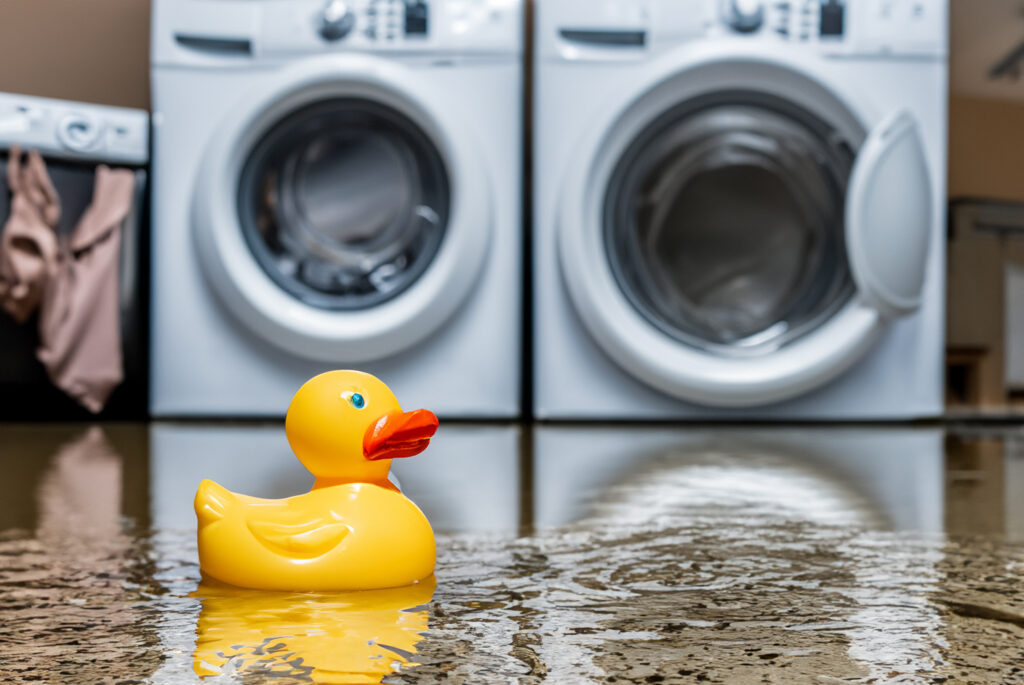
If you’ve ever experienced your washing machine standpipe overflowing, you know how quickly it can turn laundry day into a disaster. Water pooling around your washer, soaking your floors, and causing damage to your home—it’s a serious issue, one that requires immediate attention.
In this blog, we’ll cover everything you need to know about washing machine standpipes, common causes of overflow, and practical solutions to help you tackle this plumbing problem head-on.
What is a Washing Machine Standpipe?
A standpipe is a vertical pipe that drains the water from your washing machine. It’s typically located close to your washer and extends vertically from the floor, connecting to your home’s main drainage system. The standpipe is designed to prevent water from flowing back into your washing machine.
To function correctly, the standpipe should be at least 34 inches tall, measured from the floor to the top of the pipe. This height is key to proper water flow and preventing siphoning, which can cause the standpipe to overflow.
Common Causes of Standpipe Overflow for Washing Machines
Clogged Drain Hose
Over time, your washing machine’s drain hose can accumulate lint, hair, and other debris, leading to a clogged pipe. When the water cannot flow freely through the hose, it can back up into the standpipe, causing an overflow.
Blocked Sewer Line
A clogged sewer line is a more serious issue affecting your entire home’s plumbing system. If the main sewer line is blocked, water from your washing machine may not be able to drain properly, leading to a backup in the standpipe. If you notice multiple drains in your home backing up at the same time, or a foul odor emanating from your drains, you might have a blocked sewer line.
Incorrect Standpipe Height
As we mentioned earlier, your standpipe should be at least 34 inches tall to function correctly. If the pipe is too short, it may not provide enough room for the water to drain without overflowing. This issue is common in older homes as the standpipe height may not meet current plumbing standards.
Faulty Washing Machine
In some cases, the problem may lie not with the standpipe, but within your washing machine itself. A malfunctioning water level switch, which controls the amount of water entering the machine, can cause the appliance to overfill and lead to standpipe overflow. A faulty timer can cause the machine to continue filling with water even when it should have stopped, which can also cause overflow.
Poorly-Installed Drain House
If your washing machine’s drain hose is not securely attached to the standpipe or is kinked it can cause water to leak and overflow.
Fixing Leaky Standpipes: What Can You Do?
Clear & Re-Secure the Drain Hose
Start by disconnecting the drain hose from the standpipe and inspecting it for any blockages. Remove any visible debris, lint, or foreign objects from inside the hose. When re-attaching it, double-check to make sure it’s securely attached to the standpipe. The house should fit snugly over the standpipe to prevent leaks. Consider investing in a hose clamp for a tighter seal.
Remove Blockages In Your Sewer Line
If you smell foul odors, it’s probably a blocked sewer line. You’ll need to take immediate action to prevent further damage to your home’s plumbing system. You can attempt to clear the blockage yourself using a plumbing snake, which is a long, flexible auger that can navigate through the pipe and break up the clog- but that’s only a temporary fix. For sewer line issues, it’s best to call a professional plumber to assess and resolve the issue.
Adjust the Standpipe to the Correct Height
If your standpipe is too short, you have two options. The first is to install a taller standpipe. The second is to add a standpipe extension. A taller standpipe will provide the necessary height for proper drainage, while an extension can be attached to your existing standpipe to achieve the same results. Just remember, if you’re unable to resolve the issue on your own or if the overflow persists, contact a licensed plumber to assess the situation.
How to Prevent Future Standpipe Overflows
Here are a few proactive steps you can take to prevent future occurrences:
- Regularly clean your washing machine’s drain hose and filter to prevent clogs.
- Avoid overloading your washing machine, this can lead to excessive water usage and potential overflow.
- Periodically inspect your home’s plumbing system for signs of leaks, clogs, or other issues that could contribute to standpipe overflow.
- Consider installing. floor drain near your washing machine to provide an additional drainage route in case of overflow.
- If you have an older home, have a professional plumber assess your plumbing system to ensure that it meets current standards and can handle the demands of modern appicances.
Laundry Room Leak? Not Anymore.
Don’t let a washing machine standpipe overflow disrupt your daily life or cause unnecessary stress. At Maplewood Plumbing and Sewer, we specialize in repairing, replacing, and installing standpipes to keep your laundry room’s plumbing system functioning how it should.
Comments are closed


